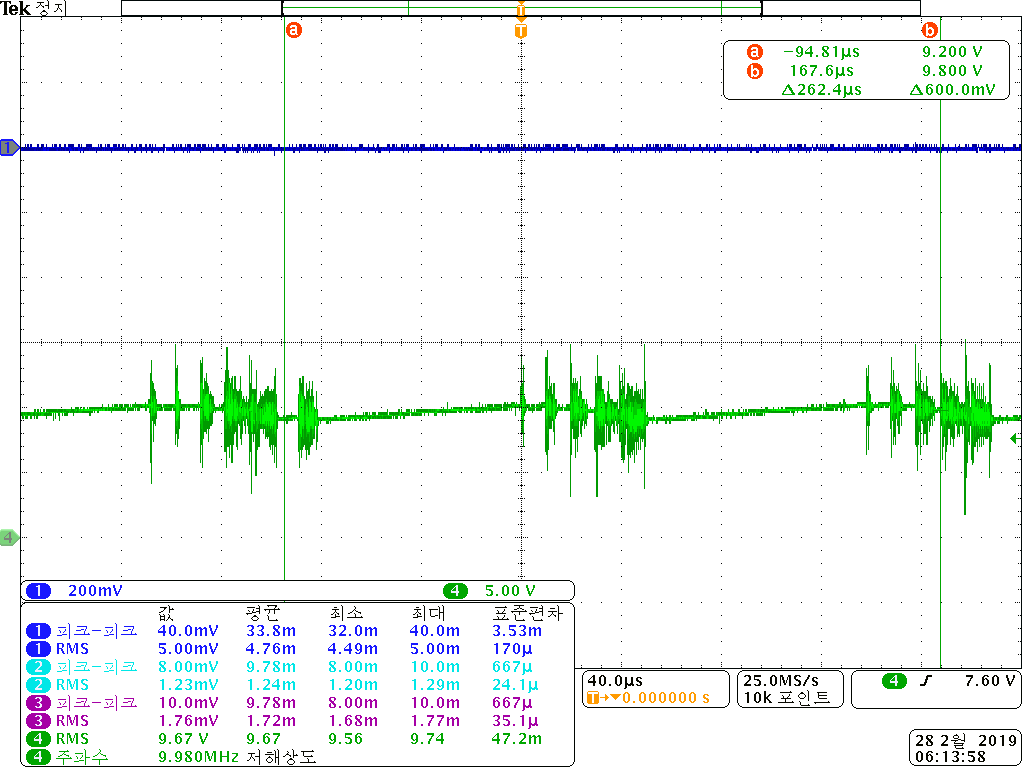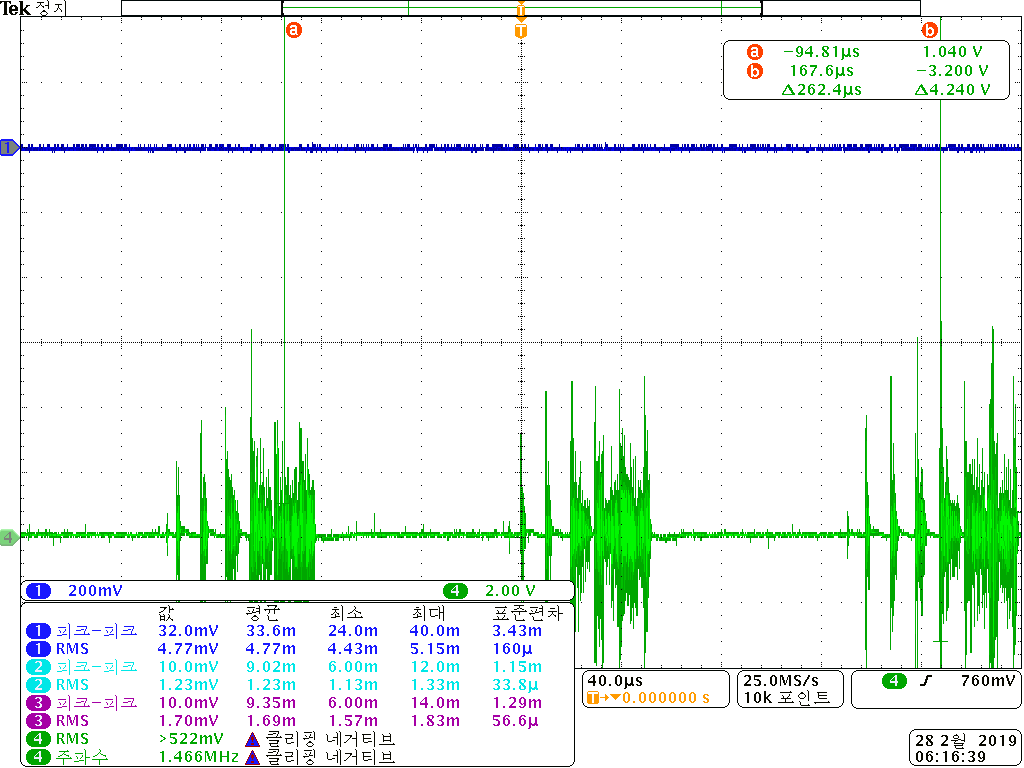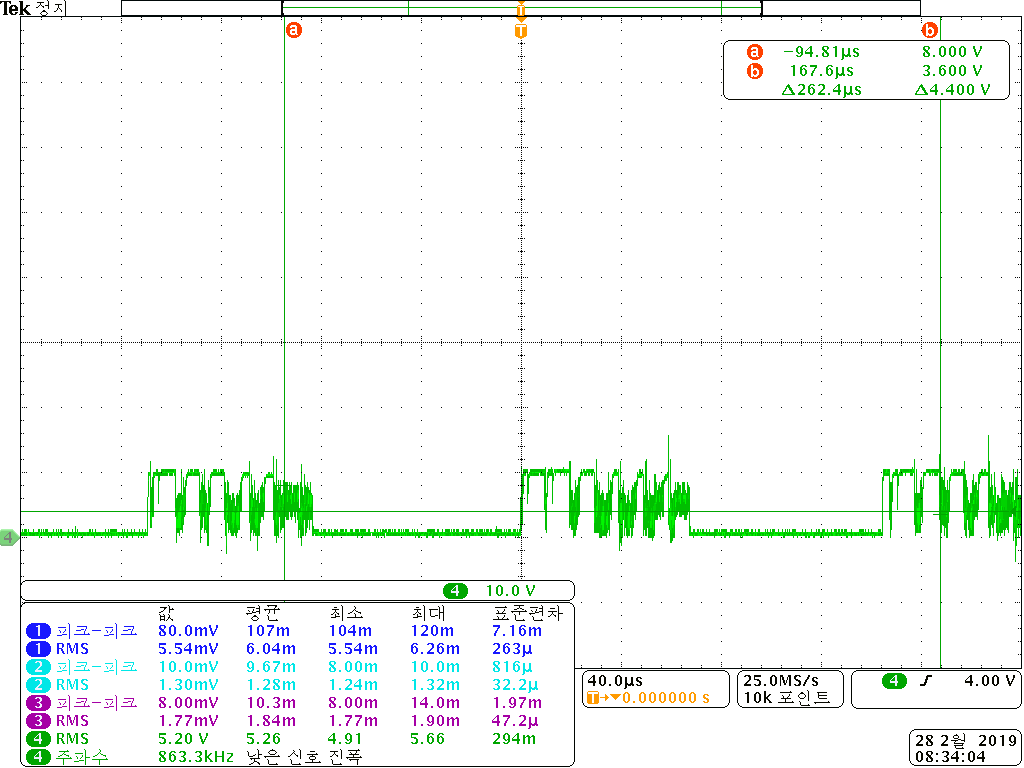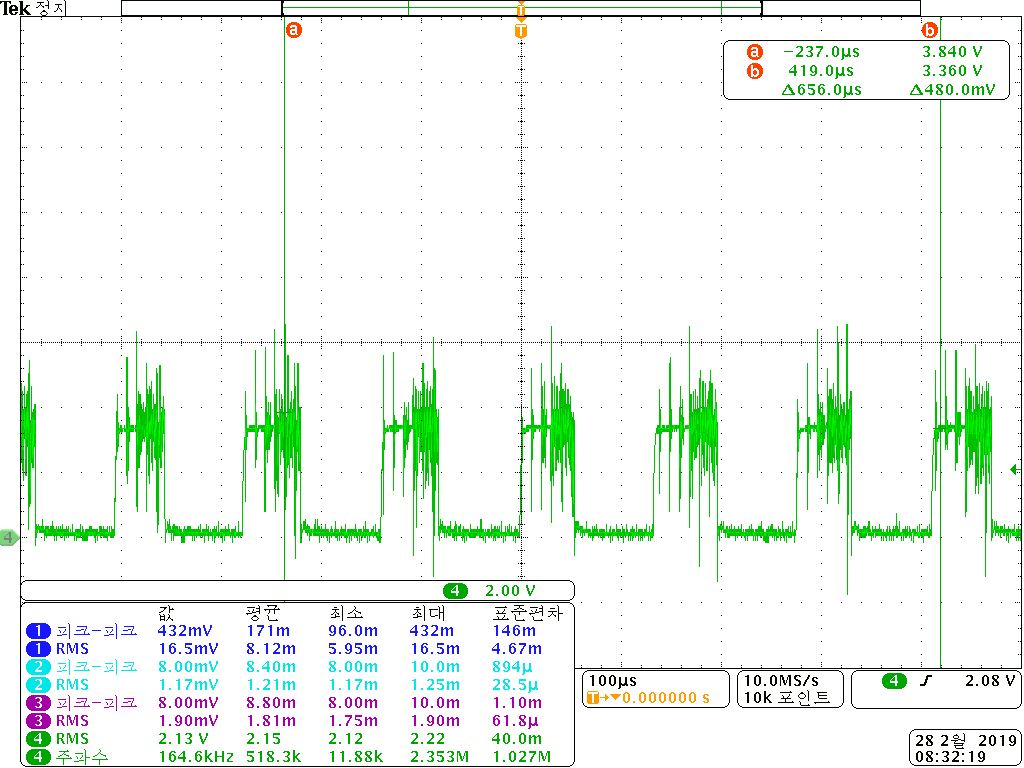Hi,
I am trying to drive a motor (48V, 400W, brushless DC) using the DRV8302.
I drew schematics and made a pcb board, referring to the datasheet and some blogs.
MOSFETs: BSC077N12NS2
M_PWM: 1k-ohm resistor to GND
M_OC: 1k-ohm resistor to GND
GAIN: 1k-ohm resistor to DVDD
OC_ADJ: 0-ohm resistor to DVDD
The problem is summarized as follows.
1. The high side gate signal is abnormal.
2. When a load is applied, noise is severe on the power line(pvdd, gvdd, dvdd, avdd, gnd) and gate signal.
▲ GVDD
▲ GND
▲ Low side gate
3. The output of the fault pin is toggled with noise when the load is applied.
How can we solve the problem?






